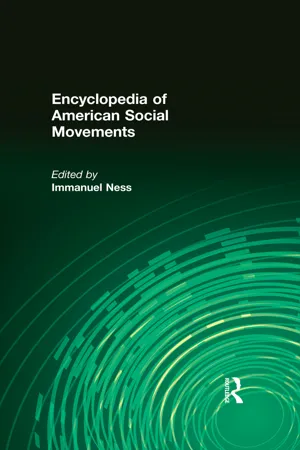History
Dennis Banks
Dennis Banks was a Native American activist and co-founder of the American Indian Movement (AIM) in 1968. He was a leading figure in the movement for Native American rights and worked to raise awareness of the injustices faced by Indigenous peoples in the United States. Banks passed away in 2017 at the age of 80.
Written by Perlego with AI-assistance
Related key terms
1 Key excerpts on "Dennis Banks"
- eBook - ePub
- Immanuel Ness(Author)
- 2015(Publication Date)
- Routledge(Publisher)
The Last of the Mohicans in 1992.James G. LewisPaul area. Dennis Banks was therefore openly recruiting from the moment he first visited the island in December 1969. His major coup in this respect was his success in bringing into the fold IAT's oratorically gifted spokesperson, a young Santee named John Trudell (now an acclaimed poet) who went on to fulfill the same function for AIM from 1970 to 1979. Also signed up was Russell Means, a reservation-born but urban-raised Oglala Lakota imbued with what many saw as a strong ability to garner the attention of the media. It was Means who conceived of and led the Mount Rushmore occupation during the fall of 1970, as well as a sequel carried out the following June. It was Means, too, who organized AIM's seizure of the Mayflower replica anchored at Plymouth, Massachusetts, on Thanksgiving Day, 1971; the ship itself was briefly used as a podium from which a list of Indian grievances was delivered, while Plymouth Rock was painted red.Simultaneously, other AIM members were busily engineering a series of confrontations and Alcatraz-style occupations designed to attain more concrete goals. The 1971 takeover of unused military facilities at Fort Lawton, near Seattle, for instance, ultimately resulted in the construction, on the site, of an American Indian cultural center. Confrontations in Oklahoma and Minnesota precipitated Indian control over schools in both states. Another confrontation in Denver led to improved healthcare for native people in that city. Under these circumstances, AIM chapters began to sprout up all over North America; by late 1972, the unofficial count was forty-three in the United States and another half-dozen in Canada; a year after that, AIM could boast solid alliances with the Crusade for Justice, a Denver-based radical Chicano organization headed by Rodolfo "Corky" Gonzales, the Los Angeles—based Brown Berets and Chicano Moratorium, Jesse Jackson's Operation Push in Chicago, the Puerto Rican Young Lords Party in New York, and the remnants of the Black Panther Party in Oakland.
Learn about this page
Index pages curate the most relevant extracts from our library of academic textbooks. They’ve been created using an in-house natural language model (NLM), each adding context and meaning to key research topics.
